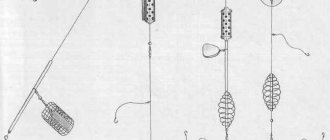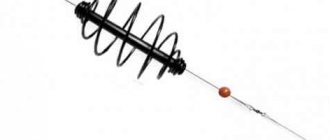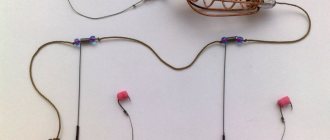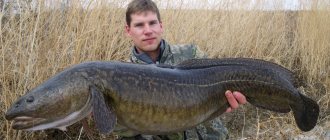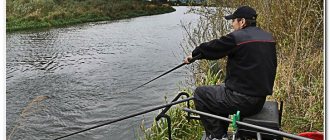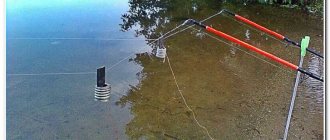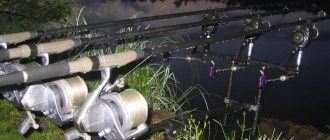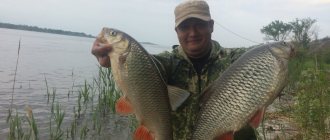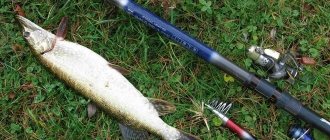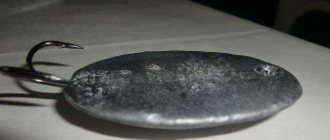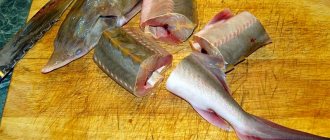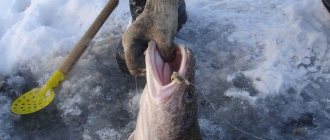Since ancient times, people have been forced to fish to feed themselves and their families. Nowadays, fishing has become for many men a gambling hobby and a wonderful vacation at the same time. A large catch pleases the eye, and fish soup cooked from fresh fish is not only tasty, but also healthy.
What can we say about dried fish, which is so popular with a foamy drink called beer. There are a lot of different fish splashing in the rivers and lakes of the Russian Federation. And almost all of it lives and feeds at the very bottom. That's why one of the most favorite types of fishing is bottom fishing from the shore.
Bottom tackle - design
The design of such gear has always been one of the simplest. Its main components are the rod itself, the reel, the leash, a piece of fishing line with a weight and hooks.
fishing line
A thick fishing line is used that is capable of not breaking when catching large predators. It is wound onto a spool (reel), and a sinker with leads and hooks is attached to the end. The most suitable fishing line is from 0.35 to 0.5 mm.
Sinker selection
It is important that the sinker has any streamlined shape: rhombus, drop, triangle, pear, and weighs at least 30 g, but not more than 100 g. The material of manufacture is lead. Often, fishermen quickly make sinkers from steel springs, clay, and even cans.
If the water current in the fishing area is strong, then you need to use a heavier sinker. It will be easier to cast it further from the shore. Such weights do not get stuck in the bottom silt. They do not interfere when an angler hooks and pulls out a fish. Sinkers in the shape of a cylinder or ball quickly fall into the silt, sink deep into it, raising the turbidity and scaring away the prey.
Good to know! The smoothness of the shape of the sinker is especially important if the depth of the reservoir is shallow. After all, it must fall to the bottom silently, otherwise the catch will be zero. The weights must be attached to a strong fishing line in a sliding, hanging or blind way.
Leash
The leash should be thinner than the donkey line. The length is 0.5 m.
There are five main methods of attaching leashes to fishing line:
- Loop in a loop. On the main line, several loops are made according to the number of leashes. Then the loop of the leash is threaded into the loop of the line and tightened.
- Stringing buttons. On the forest, buttons are strung according to the number of leashes. It is necessary to tie a knot before and after the button. A loop of the leash is pulled through the button and pulled tightly.
- Cut loop. Very large loops are made on the forest. Then they are cut closer to one edge, at a height of 5-6 mm from the nodule. It turns out to be a leash. A hook is already tied to it.
- Insulating tape. Tubes are made from small pieces of insulating tape and used to attach leashes to the line. Loops are made before and after each tube. A loop is also made at the end of the leash and tightened around the tube.
- Carbine. The leashes are attached to the line using a store-bought removable carabiner.
Selection of equipment
Let's try to understand the basic elements of the equipment:
- Rod . If your budget allows, you should definitely opt for a more or less high-quality feeder of medium construction and with an average test - this allows you to differentiate fishing conditions without replacing gear. Over time, you can acquire forms adapted for fishing in various bodies of water and obtaining trophies of various calibers. With a total budget deficit, you can stop at Chinese nameless consumer goods, but quality here is a matter of luck.
- Fishing line . The main thing here is to maintain parity between the strength and invisibility of the equipment. If the use of coarser and more noticeable equipment (for example, braided cord) is allowed downstream, then in reservoirs with standing water, high-quality monofilament thread performs best. In all cases, it is recommended to use almost invisible fluorocarbon for leashes (this is a universal option), but when fishing with a feeder, other options are also possible. When fishing with an elastic band, a safety rope made of large diameter monofilament or braid is additionally used.
- Reel or reel . Reels are used in the simplest fishing lines and elastic bands - these are not even mechanisms, but devices for winding fishing line, which you can make yourself, from any piece of wood or plastic bottle. For a feeder, the best option is a spinning reel with a friction clutch.
- Shock absorber . A shock absorber is necessary for fishing with a rubber donkey - it is its integral structural element. You need to understand that even the highest quality rubber band is subject to rapid wear when exposed to water and intensive use, so it is better to replace it before each fishing trip.
- Sinkers . For this type of gear, fairly heavy weights are usually used. The most massive options are required when fishing with rubber bands: anglers sometimes even use bricks and stones. The weight of the load for a traditional bait is usually limited to 100 grams, and the maximum is designed for fishing downstream. With a feeder, everything is much more complicated: the weight of the sinker (usually in the shape of an olive) is calculated based not only on the speed of the current, but also on the weight of the equipped feeder, the characteristics of the fishing rod and other factors.
- Hooks . Choosing a hook is also not a very simple task: it is selected according to the type of bait and the weight of the intended prey. The most inconspicuous are small singles, but fishing with live bait, for example, requires the use of a double or tee. In this regard, elastic bands are good, allowing you to use up to a dozen leashes with different types of hooks.
Types of donka fishing
Fishermen rarely use one tackle to catch fish. They install a large number of donks along the shore. And then they carefully watch the tips of their rods, waiting for a bite. Gear can be placed several meters apart.
The largest fish live in those places where bushes, trees, and all kinds of snags stick out from the water. This is where you need to catch catfish, pike, bream and other fish that look for food at the bottom.
Good to know! A distinctive feature of fishing for donka from the shore is the stationary location of the equipment in a pre-fed place in the reservoir. There are several main types of donkey fishing.
Classic version
The classic version of the donkey has three main components: a short rod (1 m), a reel or reel, 50 m of line, a sinker, and leashes with hooks.
The rod itself can be either wooden or metal. One end of it is stuck into the ground, and at the other end a loop is attached for attaching the scaffolding.
The loop can be secured with threads. The wound threads are impregnated with water-repellent glue. Some fishermen, if they have a reel, install a tulip ring at the end of the rod.
Donka with shock-absorbing elastic band
When fishing for donka from the shore, sinkers regularly hit the water and scare away the prey with the resulting noise. Over time, donkeys with shock-absorbing rubber were invented. Now they can be purchased in fishing stores.
A rubber thread acts as a shock absorber. It is placed between the line with a sinker and leashes. Rubber facilitates the delivery of baits without noise.
The disadvantage of this gear is the low wear resistance of the rubber thread. With such a bottom it will not be possible to fish in places with a slippery bottom, since the sinker will be pulled towards the fisherman by the compressing rubber band.
Tackle with feeder
Donka with a feeder is very popular for fishing. This type of tackle allows you to place a small container with bait very close to the bait. Therefore, the catch increases many times over. After all, the feeder itself also plays the role of a weight.
During casting, it flies a long distance, and when it hits the bottom, it creates a feeding area for fish. This gear is good for fishing at great depths, with strong currents. But it will not be possible to use such tackle in places with a littered and heavily overgrown bottom.
Features of the tackle
Bottom tackle is a huge group of devices for fishing, united by one main feature: the bait is attached to a hook located on a leash and held near the bottom with a sinker. This category includes the most primitive fishing rods, the basis of which is fishing line, and modern feeder fishing rods, the price of which can be several tens of thousands of rubles. The choice of fishing tactics directly depends on the type of tackle.
This bait provides a rich catch even with a bad bite! More details Bottom tackle can be used to catch any fish, both peaceful and predatory - the only difference is in the nuances of the equipment and the choice of bait. In addition, night fishing is also possible, and this is important: after sunset, the activity of pike perch, catfish, and sometimes large bream increases.
Another obvious advantage is that precise depth measurements are not necessary: thanks to the weight, the bait will still be located in the bottom layers that are richest in fish. One angler can control several donks (usually 3-5) without overexerting too much.
It should be borne in mind that the main thing in equipment is invisibility for fish. This means that for fishing in lakes and reservoirs they use fairly thin monofilament, fluorocarbon leashes that are hardly noticeable even in clear water, and small hooks. In heavily silted reservoirs, you can use more powerful gear.
If you are preparing gear for fishing in fast currents, it is wise to use braided line as the main line: it cannot be called inconspicuous, but it is stronger with a smaller diameter, which means it is not carried away by water as much. It is also natural to increase the weight of the sinkers used, as well as the use of more powerful equipment.
Zakidushka
Zakidushka (zakidukha) is the oldest donka used to catch fish since the invention of the fishing line. In fact, there are no special differences between it and the primitive delivery. The design of the gear is simple for primitivism: a fairly thick fishing line with one or two or three leashes with hooks, a reel at the beginning, a load at the end. You can use a classic penny bell as a bite alarm, but you can do without it altogether. The tackle is attached on the shore in any way - to a specially driven peg, tree, stone.
The advantage of a snatch is that it costs practically nothing, so the loss of gear does not hurt the budget. This means that it can be safely left unattended in anticipation of self-hooking, which is often used by residents of settlements close to the reservoir, placing dozens of gear and checking them once or twice a day.
A more complex tackle called “peremet” (provided that it is intended for fishing in the bottom layers of water) can also be considered a variety of bait. Unlike a backsplash, a crossbar is attached at two points and is often equipped with floats and a large number of hooks. It should be remembered that fishing with gear with more than a dozen hooks (and in some regions even less) is considered poaching.
Donka with rubber shock absorber
Here we have a very comfortable to use and easy-to-use modification of the above-mentioned snag - an elastic band. This tackle involves the use of a rubber shock absorber, which is the well-known “model”, which is responsible for returning the donkey to its working position. It has a lot of advantages compared to the classic snack:
- Casting in the full sense of the word is carried out only once - the main load falls to the bottom and remains there. It is ideal to carry it out from a boat - this way you can cover a very long distance.
- All subsequent casts and reloading of the tackle are carried out from the shore and without any extra effort: pull the tackle, check and bait, release - that’s it! And no active body movements or unwanted noise.
- Ample opportunities open up for catching large fish. The shock absorber dampens the jerks of caught fish, allowing even large specimens to be brought close to the shore.
- You can play with baits. Of course, you won’t be particularly active here, but you can give the appearance of movement to a dead baitfish or artificial bait with one movement of your hand.
- You can use a large number of hooks with a variety of baits, of course, not forgetting the above-mentioned standards. To avoid tangling of leashes, as well as to instantly replace them, it is recommended to use fasteners in the form of carabiners with swivels and limiters in the form of beads.
Feeder and other rods
Using a rod and reel makes casting and handling bottom gear much easier. Fishermen noticed this long ago and began to use classic spinning rods in this capacity. Spinning rods, matches and all kinds of homemade fishing rods are used for bottom fishing to this day, but the pinnacle of evolution has become high-tech feeders, specially tailored for such fishing conditions. You can read about the differences between a modern donkey and a feeder in this article.
Using even the simplest fishing rod expands the fisherman's capabilities. The cast can be carried out as precisely as possible. With the use of a feeder, accuracy is further increased, and the need for additional massive feeding is eliminated. Fishing is also much easier, which turns into a real problem when catching trophy specimens using a classic hook. The only point: you need to be able to handle the feeder, but basic skills are necessary when working with any gear.
The main element of the feeder is the river, but no one limits its use to standing water. The only thing that differs in this case is the nuances of equipment and direct fishing tactics, but this is a topic for a separate extensive publication.
Selection and preparation of a place for donk fishing
It is not possible to get a good catch with a donk in just any place. It’s good if the fisherman has an echo sounder. Then he can accurately determine the place where the fish is standing. After all, feeding fish in the place where it is located is much easier than waiting for it to come, if at all, to the location of the feeder.
It is better to choose places where there are turns, mouths, and differences in depth. The fisherman himself can also try: to clear the fishing area of snags, mow down aquatic vegetation. In catchable places, small bridges are often built with their own hands for convenience.
How to make a simple donka
The simplest bottom fishing rod consists of a homemade reel for storing fishing line and a weight with a hook. This reel is often attached to a pin for securement on the bank.
The question of how to make a donk is not difficult even for a novice fisherman.
This gear has many advantages. It can be used anywhere you fish. This fishing rod can be used when fishing from a boat or from a pier. But its most important achievement is that it can catch fish far from the shore - as far as an angler can throw a sinker with bait. In such places there are big fish.
There is practically no fishing rod that is so diverse in design. Its size is chosen according to the depth and size of the fishing spot, and the strength of the current. This also applies to the choice of line and sinker. If it is made for one body of water, this fishing rod is not suitable for the second. For such a case, fishermen come up with universal bottom fishing rods.
Features of seasonal fishing for donka
Donka fishing is carried out in spring, summer and autumn.
During spawning there is practically no bite:
- You can get a good catch in the spring. When the spring sun is hot, fish like to bask in shallow depths. At this time, she needs a lot of food before spawning. She bites well on bloodworms and worms. The sun warms the water by lunchtime. So it is best to fish from lunch until evening.
- In summer, the best time to fish is at dawn and in the evening. Some species are good at night, such as catfish and pike perch. You can use steamed cereals, peas, and corn as bait.
- In autumn, the food supply deteriorates, as aquatic plants die off, and worms, maggots, and small fish are again suitable for bottom fishing.
Groundbait and feeders
Pre-feeding is an integral stage of any fishing. All kinds of mixtures of cereals, legumes, cereal grains, mixed feed, cakes, and so on can be used as bait. In spring and autumn, adding components of animal origin - chopped worms, for example, works well. First, massive baiting is carried out in the fishing zone, then spot baiting is carried out.
When using bottom gear of all types, the problem of delivering complementary food to the fishing site is relevant - we are talking about long distances. For this purpose, a boat is used (only before fishing, otherwise the frightened fish simply will not approach), special remote-controlled boats, self-expanding rocket feeders, slingshots, catapults, and so on. At short distances, it is permissible to throw food by hand, having previously rolled it into balls with the addition of binding and weighting elements (oats, starch, soil, etc.).
Special feeders that are attached directly to the equipment should be placed in a separate category. Go to any fishing store and you will see a lot of options. The clearest example of such a feeder is a spring, which is used both on good old feeders and on feeders. It allows the bait to “float” slightly without immediately disintegrating in the water, which increases the duration of its “action”. In addition, the presence of a spring helps improve casting accuracy.
The so-called “makushatnik” demonstrates high efficiency when fishing for carp and carp: a sinker with a “makukha” (bait made from cake). Its only disadvantage is its narrow specialization: only cake, and nothing more.
How to make a donka with your own hands?
Each fisherman can, if desired, make his own donka. Such gear will be simple, convenient, and inexpensive.
Since bottom fishing from the shore is used to catch bottom dwellers, it is immediately clear that a sinker will be required. On the shore you will need a spear or any suitable stand to secure the gear.
So, you will need:
- A reel on which the scaffolding will be wound;
- Rack for securing gear on the shore;
- Bite alarm;
- Thick forests;
- Sinker;
- Several leashes;
- Hooks.
Manufacturing procedure:
- You need to purchase the main line at the store. It is sold in reels of 100 m. Diameter is from 0.35 to 0.5 mm. You also need to buy a thinner fishing line for leashes and 4 hooks No. 4 - No. 6. Everything else is made by hand.
- A reel can easily be made from a wooden board or a piece of plastic. Length – 30 cm, width – 6 cm. At the ends you need to make cutouts in the shape of the letter V. This will make it convenient to wind the line. The cutouts must be sanded to make the scaffold glide better. One end of such a leg must be made 10-12 cm longer in order to stick it into the ground on the shore of a reservoir.
- Then you need to rewind the line from the purchased reel onto the reel. The sinker will require lead. You will need two canned food jars and sand. You need to put wet sand in the first jar and make a drop-shaped depression in it. Insert a nail into the narrow part of this drop. This will be the hole in the weight. In the second jar you need to melt the lead. This can be done even on a regular gas stove.
- Molten lead is poured into a mold. When the lead hardens, you need to pull out the nail. The sinker needs to be made very smooth using sandpaper or a file.
- The stand is made of a spear or a metal tube. The shape of the upper part should also resemble the letter V so that the main scaffold slides along it.
- The signaling device is made of rubber. In a piece of rubber measuring 3 by 6 cm, slots are made at both ends. The scaffolding will pass through one slot, and a bell is inserted into the other, which can be secured with glue.
The donka is assembled like this:
- The main scaffold is reeled onto a reel;
- The sinker is attached to the end of the line;
- Several leashes are knitted;
- The leashes are attached 10 cm above the sinker, with the same pitch.
Advantages of a running donkey
This equipment is perhaps the only one that is used only on currents and this is due to its design features. Fishing with a running bottom is exploratory and if there is no bite for several seconds, a gentle jerk is made with the rod and the sinker moves downstream under water pressure.
In this way, a significant area is fished and even with inactive biting it is possible to achieve results. The correct selection of the load is important, which, on the one hand, after casting should lie on the bottom and not move, on the other hand, after a jerk with the rod, it should move downstream.
A round sinker will not work, since with this shape it is more difficult for it to “hold the bottom” and stay in place. A good solution is an ordinary olive, the weight of which is selected experimentally depending on the strength of the current.
Fishermen made the first running donks for the current to catch chub using bread crusts, but the tackle has proven its catchability and is now used to catch:
- roach;
- subusta;
- chub;
- vimba;
- bream
There have been cases when carp were caught on this tackle, so when using it you need to be prepared for various surprises. When fishing with running donkeys from the shore, a rigid rod 360-390 cm long, equipped with a spinning reel, is used.
Important! Do not take a rod with thick tips, they, of course, cast the equipment better and further, but light bites are practically invisible.
The leashes are made from monofilament fishing line, up to 50 cm long, the hook is selected according to the size of the nozzle. When fishing with a bread crust, the inconvenience is due to the fact that small fish quickly knock down the bait, but fishing enthusiasts have found a way out of this situation and use the following as bait:
- pasta;
- salo;
- sweet canned corn.
How to cook pasta for running donka
Of all the bait options for fishing with a running bottom, pasta is the most popular. Availability, cheapness and variety of sizes make this bait universal, but the main thing is that fish bite well on it. There is no need to cook the pasta; before fishing, pour boiling water over it for 15–20 minutes, or until cooked (it all depends on the type and quality of the pasta).
To check the readiness of the noodles or cone, cut it with a knife; it must be elastic and not crumble. Next, the finished nozzle is laid out on thin paper and dried. The advantages of a bait prepared in this way are that it holds well on the hook and does not slip in the current.
When poking small fish, a piece of noodle also does not move off the hook and waits for a bite from a larger specimen. No flavorings are used when preparing noodles; the natural smell of the nozzle is another secret of its attractiveness.
Important! Pasta is also used when catching crucian carp using a classic donka with a spring. On the river, this bait is very catchy and retains its attractiveness for a long time.
Canned corn also works well with a running donkey on the river, but in order to prevent the bait from quickly getting wet in the water, it is dried before use.
Bite alarm for donkey
Bite alarms can be simple or complex, from a bell to an electronic device. Visual, audio and combined alarms are used.
Visual indicators:
- A weight is on the line between two rings;
- Pendulum devices;
- Flexible tip;
- Side nod;
- Swingtip.
Sound bite alarms are electronic devices. They are made of plastic. Powered by a small battery. Expensive alarms include a satellite communication device. The signal is sent to the pager and allows you to move 150 m away from the donkey.
Let's celebrate! Combination alarms are also electronic devices. They allow you to both see and hear the moment of a bite, since they emit both a light and a sound signal.
Reviews from fishermen
I like to fish on the Neva in the Leningrad region. All summer I fished on a donka with a feeder. In 5 hours I caught up to 6 kg of perch and another kilogram of roach. Grade:
Alexander Yu., St. Petersburg
I fish with a donk. It’s good that there are now many excellent electronic bite alarms on the market. I bought one of these to try. I really liked it! A great little thing, especially helpful in strong winds and at night. I use Krona batteries. Enough for the season. Grade:
Fedor Sh., Moscow
I've been fishing with donkey for twenty years. Mainly on the Don. But I also fished on the Black Sea, on the Mediterranean, on the Red. I fished from different banks, on rivers with different currents and vegetation. Donka is the best option for me. I am comfortable. Grade:
Mikhail V., Rostov-on-Don
My donks are assembled like this: Neva reel, main line 0.6 mm, weight sliding from 60 to 80 g. Leash - braid 0.23 mm from 40 to 60 cm. And there are no overlaps. And I always have fish. Grade:
Ivan M., St. Petersburg
I have been fishing on the Don with donka for many years. I have never used a leash longer than 30 cm. I always prefer to fish with a feeder. My opinion is this: the shorter the leash, the closer the nozzle is to the feeder. My catch is always good. Grade:
Peter D., Pavlovsk
Donka fishing from the shore is an exciting and highly productive activity. This tackle is both simple and inexpensive. Almost all types of fish feed at the bottom and are excellently caught on a wide-purpose donka.
Donkey improvement
To spread the leashes as far apart as possible, a rocker arm is knitted instead of a triple swivel, but this reduces the reliability of the equipment, especially when fishing for heavy fish. When catching small fish, which often confuse the equipment, the use of a rocker arm is justified and even useful.
There is another trick that helps prevent tangling of hooks and improve the tackle - shorten one of the leashes to 5-7 cm; this installation works well for bottom-dwelling white fish such as bream or crucian carp.
To increase the overall attractiveness of the tackle, instead of a sinker, a loaded spring is used, into which bait is driven. This makes the tackle somewhat coarser, but the additional fish-attracting factor in the form of a bait mixture is still more important. During the current they use a stickier mixture, while in a still body of water it is “dusty” and this has a positive effect on catches.
The disadvantage of the spring is that in strong currents it rolls along the bottom and this creates inconvenience. In addition, when fishing with a donkey “under a clip,” the fisherman throws the tackle all the time in the same place and creates a kind of bait spot.
If the spring rolls along the bottom after casting, it is unlikely that such an effect will be achieved. But there is an opportunity to solve this problem and make a donkey with a spring that will not roll along the bottom and, moreover, is even more effective than a standard donkey, and this bottom tackle is called a “harvester”.
